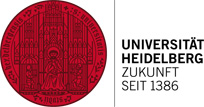Closing In On the Secret of Possible New Enzymes
1 June 2017

Photo: Annika Eisenschmidt
Researchers at Heidelberg University have gained new knowledge on the possible biological function of patellamides. In laboratory experiments, they were able to demonstrate that this natural product displays important catalytic activity in combination with copper(II). The team of scientists headed by chemist Prof. Dr Peter Comba developed a special method to determine whether this activity can also be observed in the patellamide-producing organisms. This means that stable copper(II) patellamide complexes could be confirmed in living cells – which would imply that these compounds can act as catalysts. It may even point to a new type of enzyme.
Patellamides were first isolated in 1981 from the ascidian Lissoclinum patella. Today, scientists know that they are not produced by the ascidian itself but by its symbiont, the blue-green algae Prochloron. In earlier laboratory experiments, the Heidelberg researchers already proved that patellamides bind two copper(II) ions to form a complex that functions, among others, as a catalyst for the absorption of carbon dioxide.
Based on these findings, the researchers now want to find out, if the catalytic activity of the dinuclear copper(II)-patellamide compounds also plays a role inside the Prochloron cells – that is, whether they could be a new type of enzyme. Therefore, Dr Annika Eisenschmidt explored the stability of the complexes in blue-green algae as part of her doctoral thesis. She prepared an artificial patellamide with a so-called fluorescence marker, which causes the modified patellamide to illuminate. The fluorescence is extinguished, however, as soon as the patellamide binds copper(II).
Because Prochloron can only be isolated from the Great Barrier Reef and the cells are observed to merely stay alive for one week after collection, the method was first tested on a related algae. The researchers subsequently expanded their experiments in cooperation with colleagues in Australia. It was thus possible to isolate the Prochloron cells on site together with the host, the ascidian Lissioclinum patella. The artificial, fluorescing patellamides could then be introduced into the cells. The result: As previously observed in the test tube, the fluorescence extinguished when copper(II) was added to these cells. According to Peter Comba, this demonstrates that stable copper(II)-patellamide complexes are formed inside the Prochloron cells.
The scientists will now attempt to identify the exact structure of these complexes in living cells. “If the compounds are dinuclear, as we observed in our laboratory experiments, then they could actually have important functions as enzymes,” emphasises the chemist.


